Danganronpa: A Machiavellian Adventure
You know the saying… 90% of everything is crap. Let’s face it, it’s pretty much the case. Most of music is crap. Most of movies are shit. And yes, most visual novels are utter bullocks. Yet you will always, sooner or later, come across that little gem that suddenly redeems the whole genre. That precise game that will color you surprised, “actually, visual novels can be pretty cool!” And this is it, you have just stumbled upon Danganronpa. (弾丸論破 in Japanese).
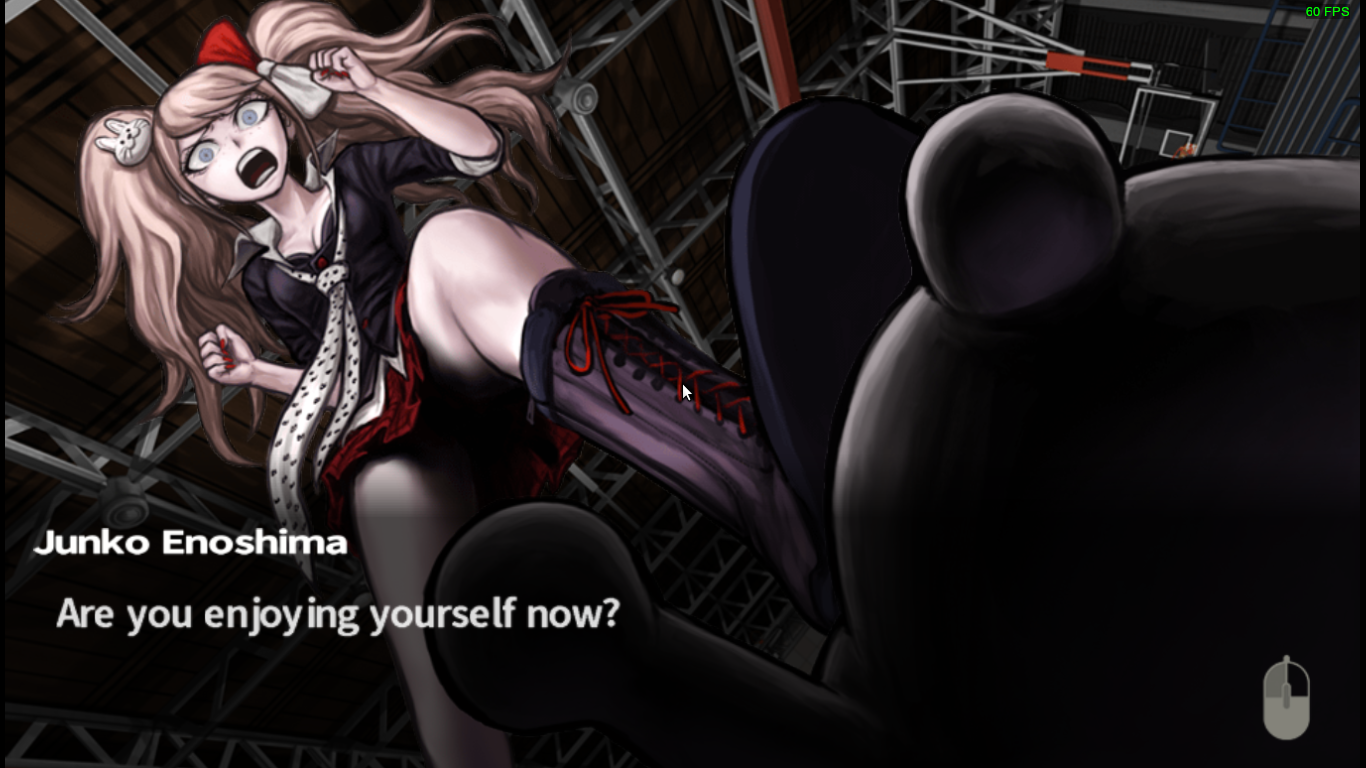
It’s easy to dismiss most visual novels because of one particular thing: the story. Visual novels are at the intersection of text and graphics, and they tend to be just borderline games, as they feature either little or close to no interactivity (and a very linear progression). So their merits hang on the story, and if it sucks, a talented illustrator sometimes saves the day by shoving some very nice illustrations for the pleasure of your eyes. But that’s not sufficient to make it worth it. It all boils down to the story. And boy, this is where Danganronpa shines and delivers. To be honest it would even shine if it were just a book - and making it into a visual novel enhances it further and makes it really come to life.

I won’t unveil any spoilers in this review. However, I need to tell you in a gist what the game is about. You play the role of Makoto Naegi, a high school student, just like your regular Joe. Not bad at anything, yet without any spectacular ability either. He has been following this academy called Hope’s Peak, which is all about recruiting the best students from all over Japan. Best at what? Well, best at what they do outside of school. Some of the selected students include the “Ultimate Baseball player”, the “Ultimate Fashionista”, the “Ultimate novelist”, the “Ultimate Pop Star” and so on. This year they have just started to admit one more student based on a lottery. And guess what? This happens to be you. So that makes you, Naegi, the “Ultimate Lucky” student.
But luck was not really on your side, it seems. As soon as you had stepped in the new school, you fainted. Waking up in an empty classroom, you are unsure of what happened and where you ended up. Looking around, you see that all windows are completely shut, covered by riveted chunks of metal, preventing you from seeing sunlight.
The place seems completely deserted, until you reach the gym where a few other students just gathered. There are just 15 of you. And suddenly a strange figure appears, Monokuma. Half teddy-bear, half devil, this strange creature declares himself in control of Hope’s Peak.
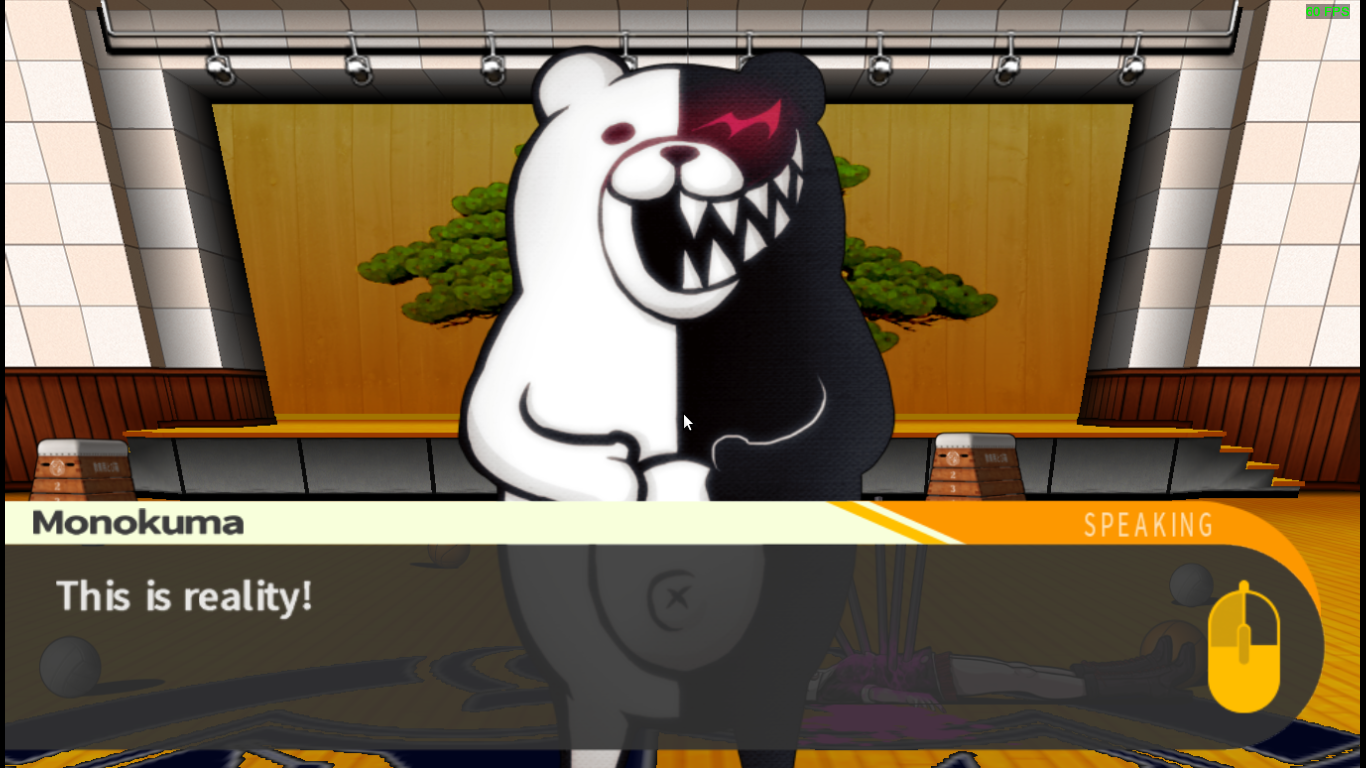
There are only 2 choices left for students: stay here and live forever in the school in peace, until the end of their days, without any contact with the outside world. Or manage to graduate and get on with their lives in the world. But getting out can only be allowed if specific conditions are in place.
This is where it gets creepy. To get out, one has to kill another student, and make sure that he is not found out to be the culprit, in the ensuing class trial that will investigate what happened. The game is all about deception and secrecy.
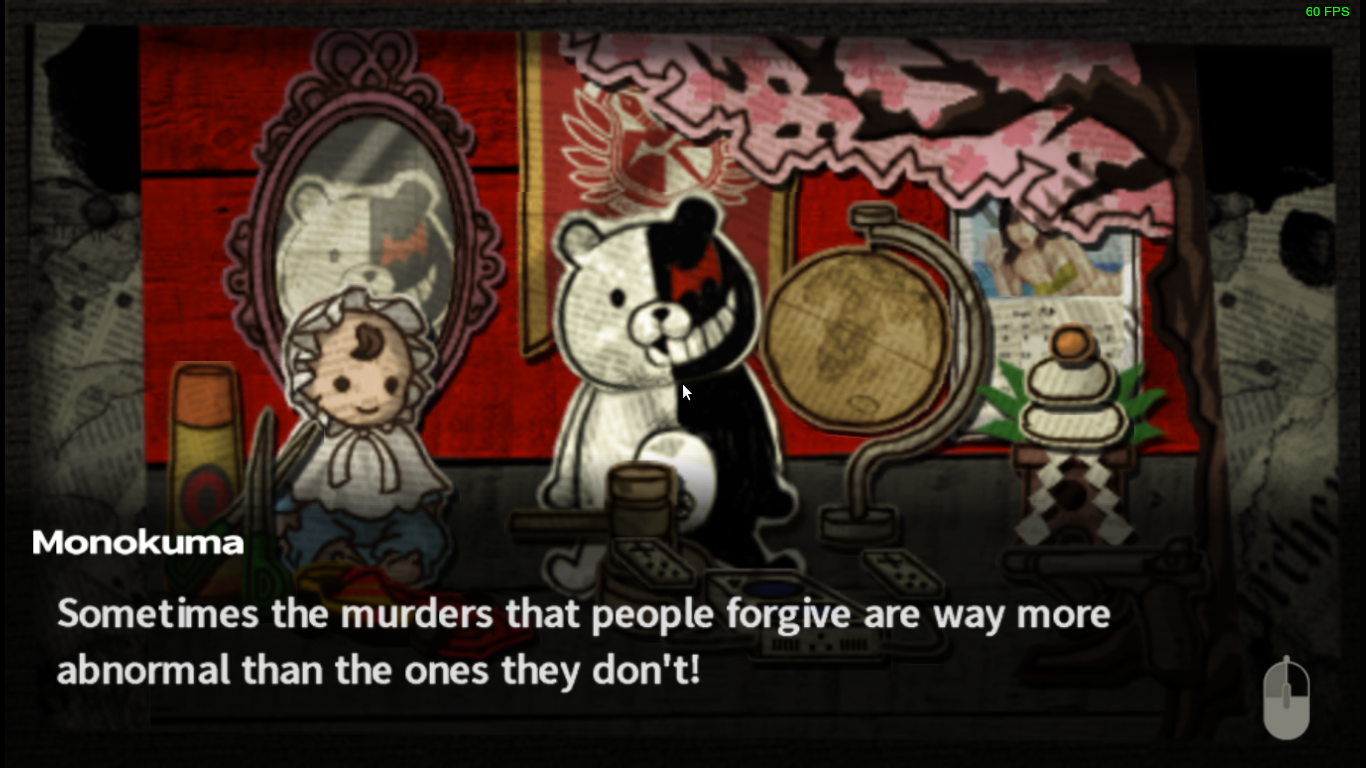
Of course, nobody in their right mind would suddenly plot to kill someone else out of the blue. They would need to be desperate to resort to such actions. And Monokuma is all about despair. What could motivate students to get out as soon as possible? He hands out one DVD for each student, letting them discover the contents in the media room. For Naegi, the DVD starts with encouragements from his family and little sister, smiling at the camera, in the living room at home. The picture changes abruptly, showing the very same living room destroyed as if in a carnage, his family nowhere to be seen. What has happened to them? Are they OK? Are they… alive? Now Naegi himself has a clear reason to get out as soon as possible.

For each student, the contents of the DVD seems to be shocking enough to make them look pale and livid. Monokuma was right: he pressed the right buttons to make them all want to leave the place. Is anyone actually going to “do it” though? The students get some level of protection: their rooms are locked and can only be opened by their own private cards. No one is usually left alone during the day, and movement at night is against the regulations.
While the first few days seem to pass normally as students get to know each other, before long the first murder actually takes place… at night. Following by an investigation, led by all students, to try to find out what really happened and who really did it.

Soon enough the first class trial begins, and Monokuma repeats again that if the one who committed the murder gets away with it, they can be out. Added bonus: if the other students decide to punish the wrong person, they will be the one punished… by death. And what if the real culprit is found? Well, there will be no mercy for them. It can only get safer with less people willing to murder each other, right?
Because of its peculiar setup, Danganronpa feels like a lot like a psychological experiment.
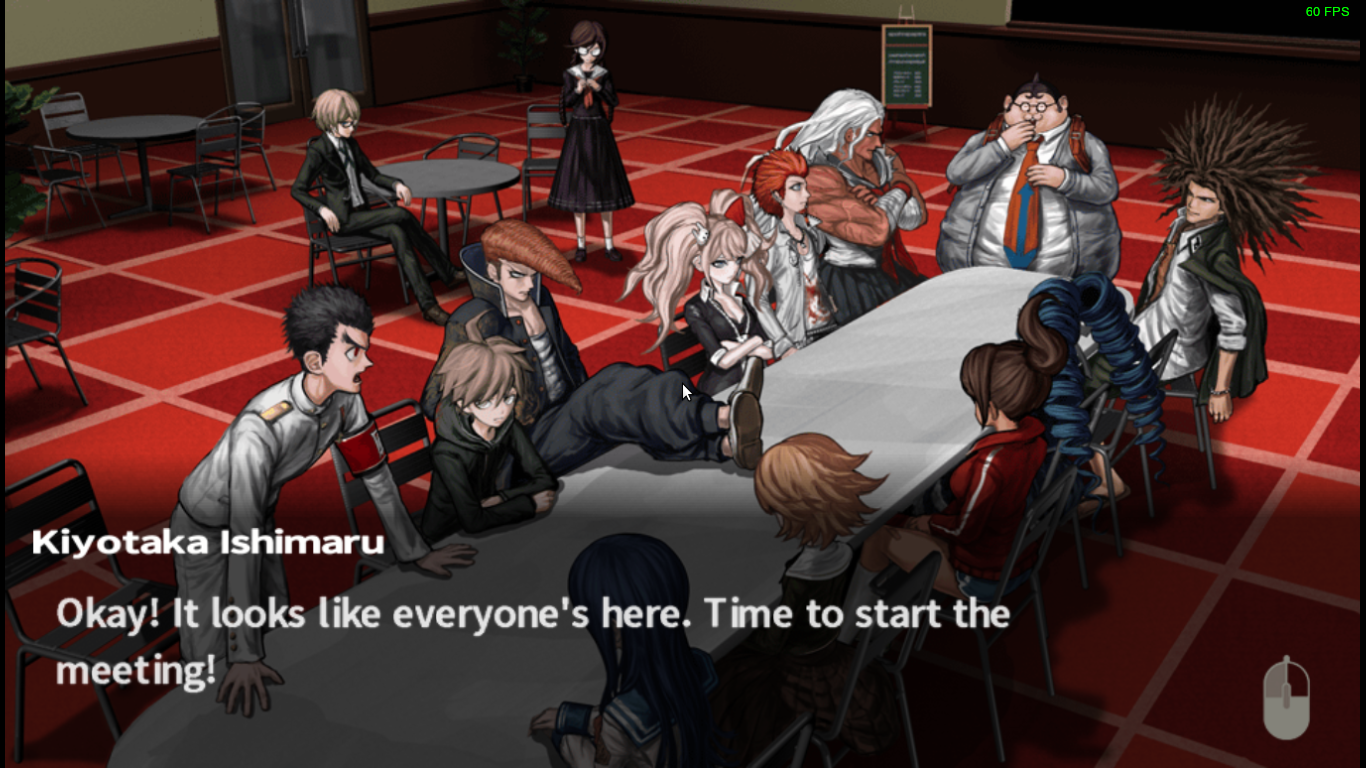
Muder, investigation, followed by a trial… wait a minute! This sounds like Ace Attorney my boy! And you would be right! It’s pretty much the same kind of structure you get to deal with. But the context differs significantly.
In Ace Attorney you (almost) never had your life on the line, and you pretty much knew who was the evil doer in the first place, or at least you had strong suspicions. Because deception is the name of the game in Danganronpa, nothing is what it looks like. Even when you think you get a grasp on what actually happened, there’s a new element leading you off tracks again. And class trials feel a lot more dynamic than regular trials in Ace Attorney, since there’s more than a dozen folks with their own take and guess on the situation.
Just like in Ace Attorney, before the trial begins you get to play the investigator, looking for clues that are going to help you in understanding what really happened. In Danganronpa, the process feels a lot more natural, since you are not the only person looking for clues - all your classmates do. You move around in First Person View (real 3D) throughout the school in such phases.
The search for clues leads to discussions with other students, sharing thoughts as to what may have happened, etc… Fundamentally it’s not a different mechanism than what Ace Attorney does, but it flows rather nicely and without interruption. I remember being stuck in some stupid Ace Attorney investigations because I forgot to click on one single stupid object. This kind of hole does not occur here. Finding clues is easy, but figuring out who is the murderer is and how they pulled it off, is the real challenge.
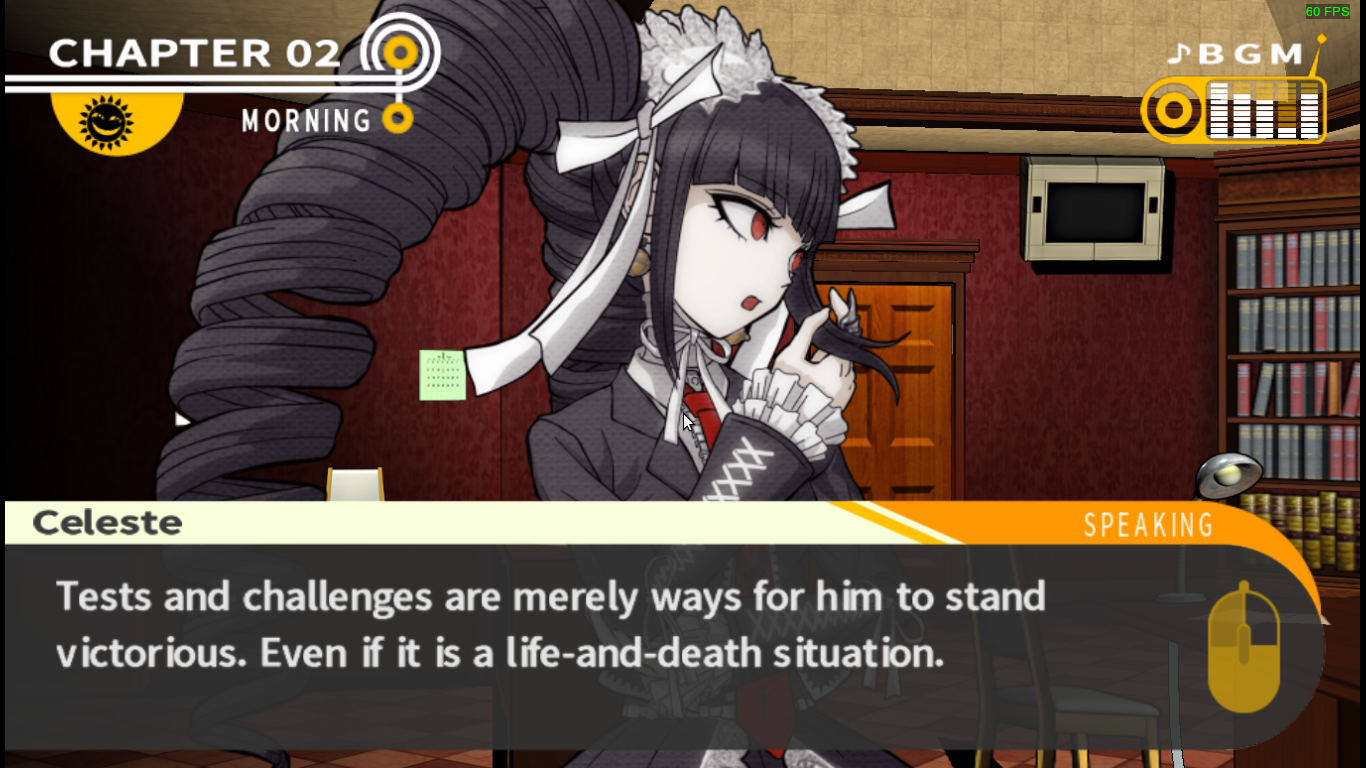
Narration is great. The plot is well written, but really, the cherry on the cake is Monokuma. This teddy bear is voiced (in the Japanese voice-over version) by the same actress who does the voice of Doraemon in Japan. Doraemon is this cute little blue cat robot who comes from the future to help the young boy Nobita-kun, suffering from poor grades and bullying at school. He’s got this inimitable voice that you would recognize everywhere, because of the original voice actress Nobuyo Oyama.
By the way, Toyota did a live version of Doraemon in Japan for its new campaign back in 2012 or so, featuring no less than Jean Reno in the role of Doraemon!
Coming back to the anime voice acting… This clever trick of using the same voice actress messes up with your memories of the funny little blue robotic cat, and this murderous Monokuma. Of course, you have to know about Doraemon in the first place to fully appreciate the effect, this is why I am telling you about this! And I highly recommend you do not listen to anything else but the Japanese voice-over version of the game, nothing like the horrible English one that sucks balls.
Music and sound effects are also top notch. Some of the tracks could have easily been featured in an awesome action game and not feel out of place. Monokuma’s sudden appearance is also introduced by circus-like sound effects that are just perfect to reinforce the kimo-kawaii (ugly-yet-cute) aspect of the character.
I was a little put off by some of the character designs in the first place - some students are a little weird, but it’s just a matter of getting used to it. It certainly does not have your typical manga vibe, Danganronpa’s designers made sure it did not look like other games in the genre. The visual style beyond the depiction of protagonists. Danganronpa mixes 3D scenes with 2D objects, giving a strange perception of depth and disconnect. Characters are for example always represented as 2D plane surface without any thickness, as if they were made of paper or something, while a number of objects in rooms are solid 3D objects.
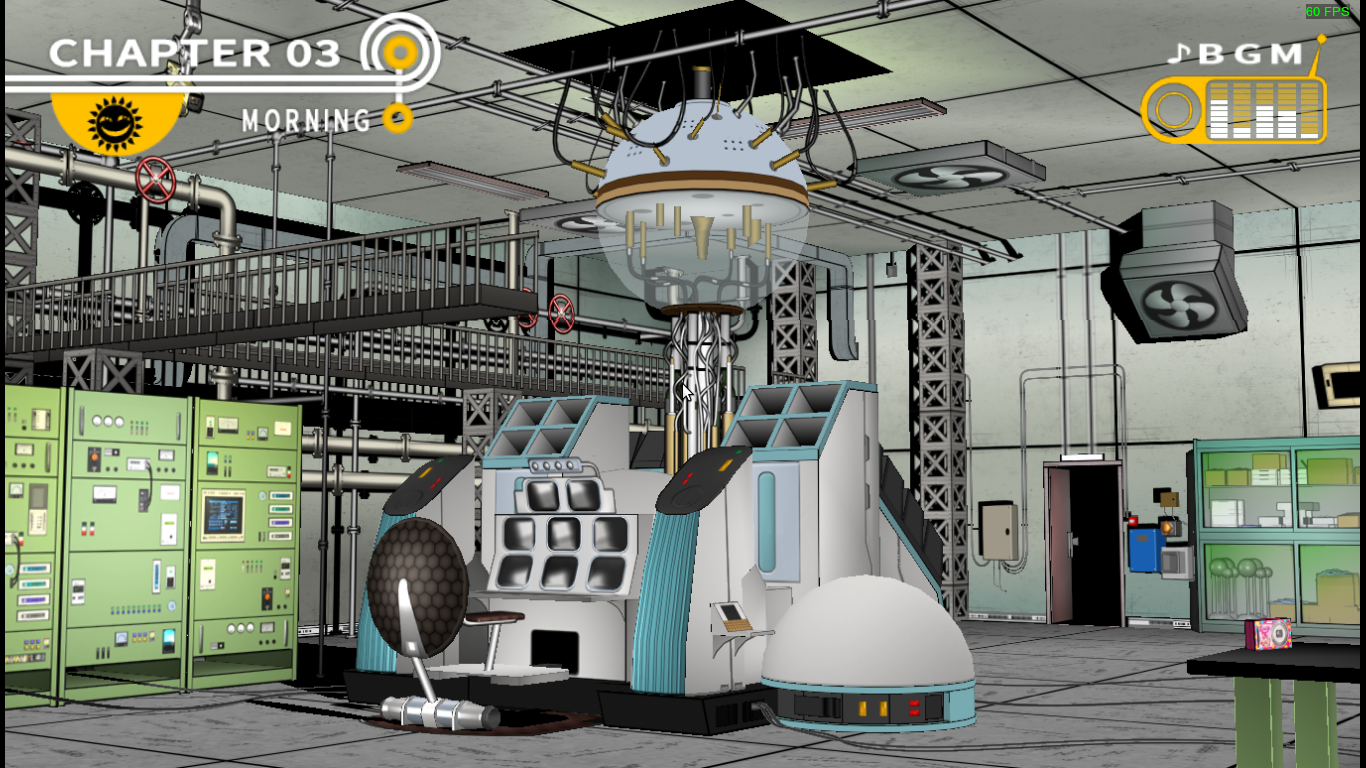
This is probably done partly for artistic reasons, since 3D manga-like characters are pretty difficult to render well, especially when it comes to making them really expressive. The other reason is hardware limitation. The game was first made for the Sony PSP, and while it was an impressive console back in 2004, in 2010 you could not expect miracles from it. Shame on me, I saw that game years ago in Japan on the PSP, and I just completely disregarded it at the time. Well,* it’s never too late.*
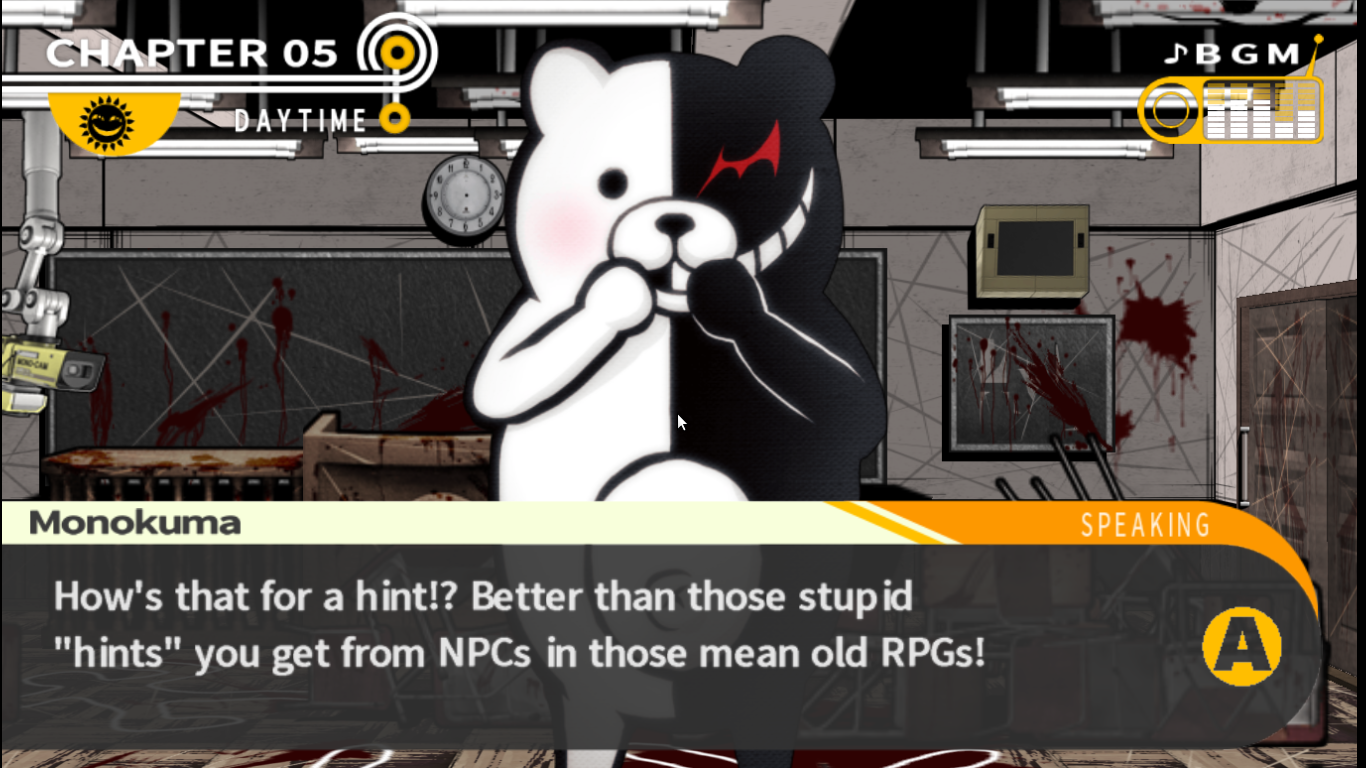
As to why it’s called Danganronpa - it’s easy to explain. During the class trial, arguments from other characters than can be refuted (論破する - ronpa in Japanese) have to be shot down with “clue bullets” and a bullet is 弾丸(dangan). With your mouse or your joypad, you aim at such words and shoot down what you think is incorrect. If you make a mistake, you lose one heart, and you can only make 5 mistakes in total before reaching a game over. The game over is never a big obstacle though, since you can always restart with a full life bar where you failed.
This sounds fairly simple, but there’s more to it. Some obstacles may run on screen above the words you want to shoot, so you need to get rid of them first before being able to shoot the desired words. And sometimes you don’t have the right clue to begin with, you need to “charge” a clue bullet using someone else’s testimony and then use that single bullet to refute a particular statement. There’s actually quite a few possibilities that make you a little more involved in the choices you make in the class trial.
Such subtleties are introduced very progressively in the game, so that you don’t feel overwhelmed by all the options at hand right from the beginning. A really important aspect, masterfully done to make it easy for all players to get into the game.
So is there really anything wrong with Danganronpa? Not much, honestly. There are a few issues I can find. Between two murders, you usually have several days to spend with your classmates. Just like in games like Love Plus, you can decide who to spend time with, twice a day. It can give you a false perception of freedom. You may get “closer” to a few characters, but it does not change any of the events. On top of that, some of your choices are restricted, with your character, Naegi, refusing to talk to some of them on the pretext that “he has nothing to talk about” with them - especially in the beginning.
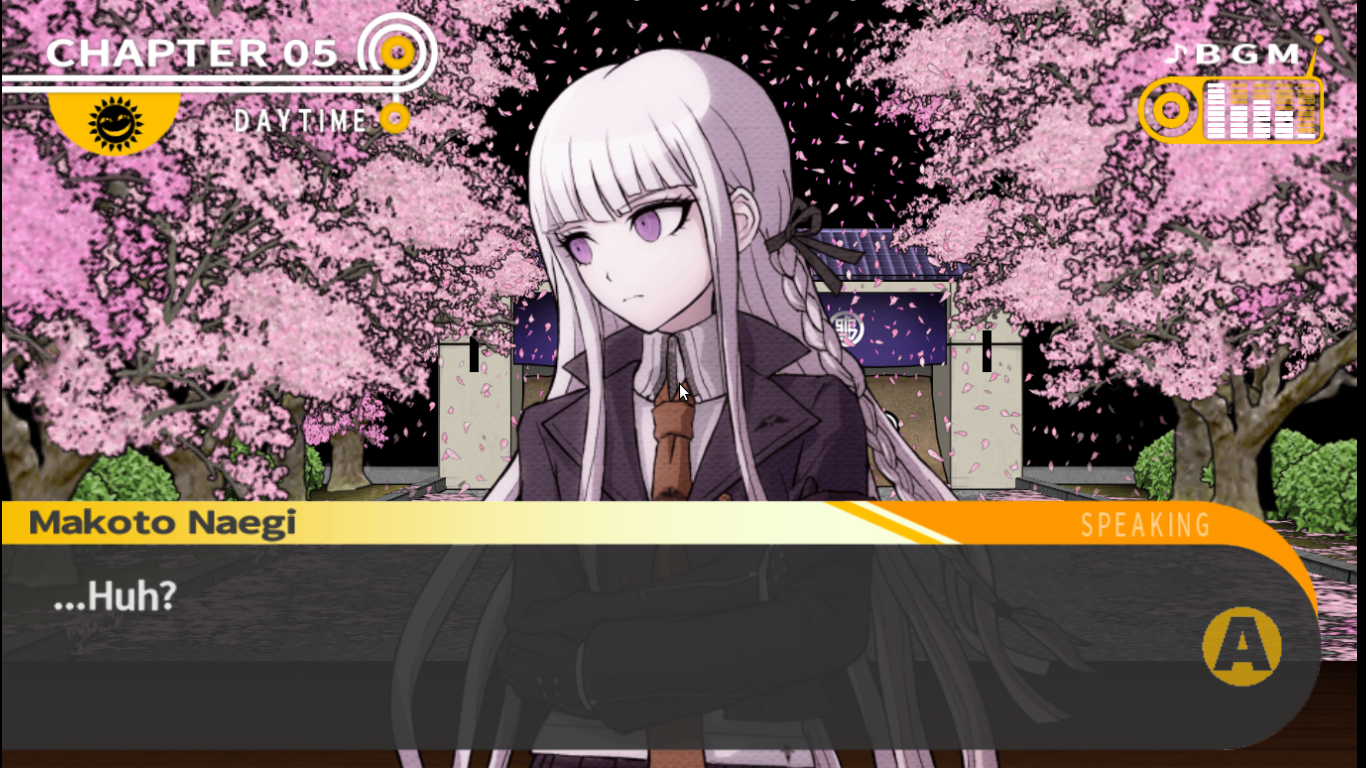
It’s surprising only if you expect a full RPG with branching and stuff like that, but this remains a Visual Novel, using just a little amount of freedom to make you feel in control, not for any other effect. You just need to forget about typical game mechanisms, and simply enjoy the ride.
Port wise, it’s close to perfect. It can even run on a potato. My old 2011 laptop runs the game wonderfully, even at more than 40 fps in 3D heavy scenes. Everything works almost flawlessly (only issue I had is to switch bullets using the trackpad: not easy when you trackpad emulates mouse scroll). Playing with a gamepad (I used a Dual Shock 4 with dsdrv4) was just perfect.
My only gripe about the game is about the text: somehow the kerning is just f*”!ing awful and out of place. So, so bad. Devs, please update the port to take care of this. Have pity on us.

Seems like nobody cared about typography, and if your eyes are trained they will feel a great deal of pain every single time your eyes remain one second too long on a couple of words.
But yeah… That’s it. It’s a fantastic game. The story will keep you coming back until you reach the end and finally uncover all secrets behind the school. As I said in the beginning, out of all the Visual Novels garbage, this is the exception, the lost jewel in the dumpyard.
It should be pretty clear by now that this game ends up in our Recommended Games List.
